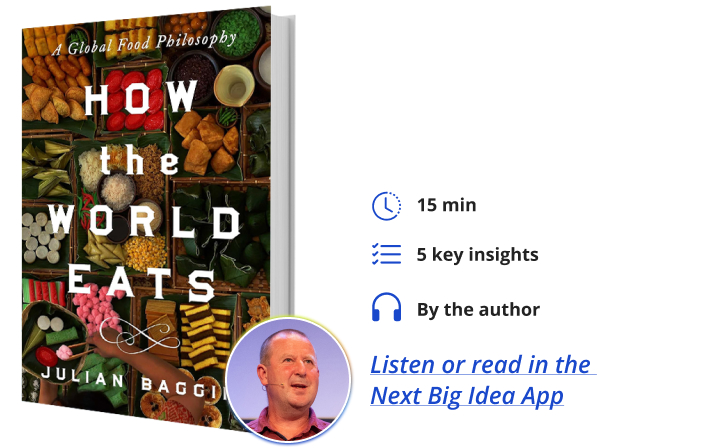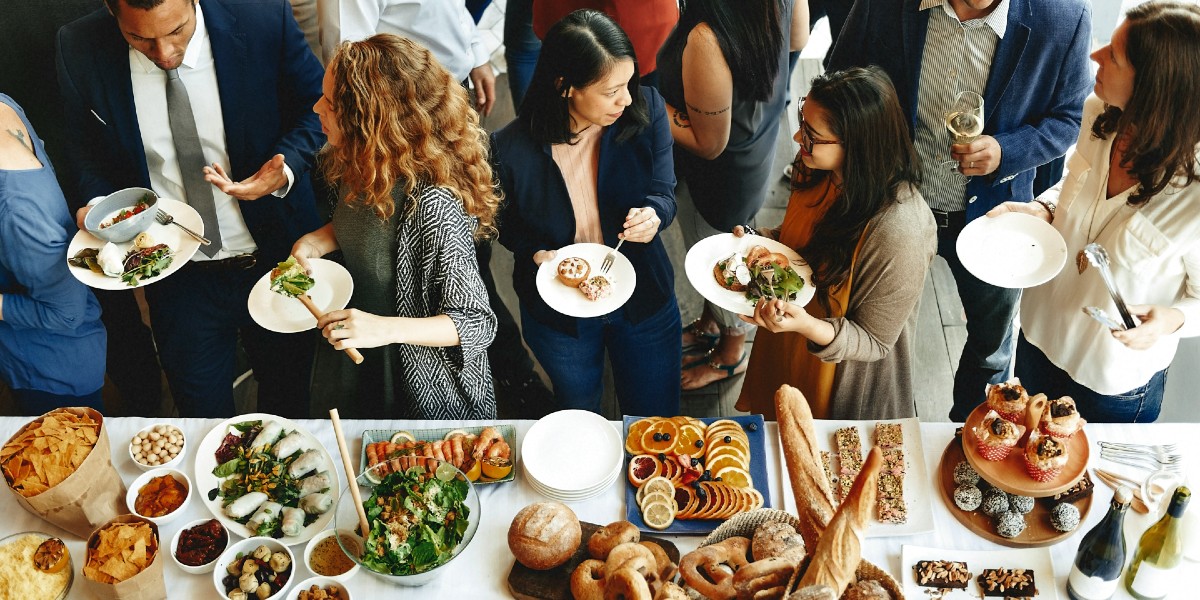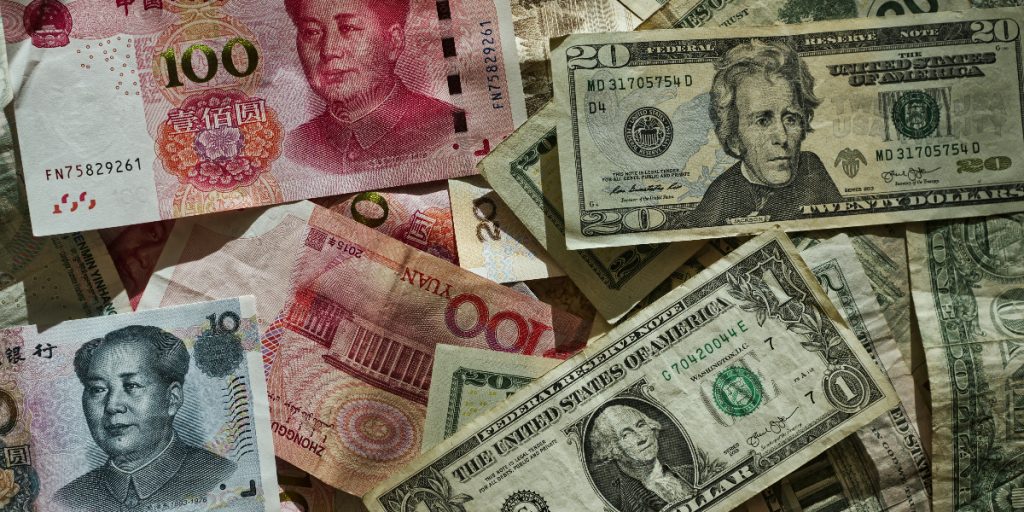Julian Baggini is a philosopher with a long and deep interest in food and where it comes from. His books include internationally bestselling How the World Thinks; How to Think Like a Philosopher; The Virtues of the Table; and The Pig That Wants to be Eaten. He is the Academic Director of the Royal Institute of Philosophy and a member of the Food Ethics Council. He is a regular columnist for The Guardian, Prospect magazine, Financial Times, and The Wall Street Journal.
What’s the big idea?
Food is such a big topic that few really grasp the whole of it. Using his philosophical skillset, Julian sketches a picture of how all the elements of food consumption and production fit together. Extracted from the complexity of food’s impact on health, economy, wellbeing, nature, civil strife, and so on, there are common principles that characterize food systems that work for us and for the planet.
Below, Julian shares five key insights from his new book, How the World Eats: A Global Food Philosophy. Listen to the audio version—read by Julian himself—in the Next Big Idea App.

1. Debate about food and farming is too polarized.
Polarized debate about food and farming stands in the way of everyone coming together for the common good. Beneath the dichotomous rhetoric, the world is not nearly as divided as it seems.
Take the apparent chasm between organic and non-organic agriculture. In one way, it is a sharp divide because you either tick the boxes and get certified organic or you don’t. But in practice, the difference between the two camps is blurry. Some farms are in effect organic but can’t say they are because they don’t pay for certification. Nor can we separate them out based on which use fertilizers and pesticides and which don’t. Organic farms use both, only they can’t be synthetic—in their definition of the term. But so-called “natural” inputs are not necessarily safer. Copper is allowed under the terms of certification as an organic fungicide (commonly used for tomato production), but copper is known to be toxic to humans. Some non-organic farms use chemical inputs with such care and in such limited amounts that they pose no threat to human health or wildlife.
Or take the distinction between farmed and wild-caught fish. Whether one is better than the other all depends. There are some terrible practices on the open seas, including the use of huge trawlers to scrape the seabed, basically bulldozing habitats. There are also awful fish farms that pollute surrounding waters and nurture sick fish. But there are also good practices on both sides. Like most either/or questions about food, “farmed or wild?” is just the wrong question.
Simplistic, polarized thinking has real consequences. Take the idea that plastic is bad and biodegradable packaging is good. An extra layer of plastic wrap in the packaging of Danish cold meats increases their shelf life and reduces waste, and for almost all food, the environmental impact of waste is higher than that of the packaging that prevents it. Or take the owner of a vegetable box delivery scheme who knows that the greenest option is to use reusable and recyclable hard plastic boxes but must use cardboard because his customer base is so convinced that plastic is always the enemy.
2. Plurality is key to how we feed ourselves.
There is no one right way to farm, make food, or eat. It depends on context, culture, and circumstance. Grazing cattle is sustainable and efficient on the Argentinian Pampas, but not so easily done at scale on the polders of the Netherlands. The Mediterranean diet may be very healthy, but the Japanese one is at least as good. There is a place for small artisan producers, but the big manufacturers of, say, pasta do a good job supplying reliable, tasty, nutritious food at a good price. What works on a wheat farm in one place may not work in another in the next valley, let alone in another country.
Advocates of land sharing argue that farmland must be made more hospitable to wildlife so that we can share our productive land with nature. Land sparers argue that the best way to protect the environment is to make agriculture as efficient as possible so that it uses less land, leaving other habitats pristine. Both perspectives are right, and both are wrong. In some places, land sharing works best, while in others, land sparing is more appropriate. The right option in one place can be wrong elsewhere.
“There is no one right way to farm, make food, or eat.”
Too often, people advocate for one-size-fits-all solutions: that the world needs to go organic, or that everyone should be using more synthetic inputs; that we should all go vegan; that we should bring down the big food and agri-businesses; that everything we eat should be prepared from fresh. We homo sapiens have been able to feed ourselves for millennia because we have been resourceful, adapting ourselves to variable and changing conditions. Plurality has been one of our greatest strengths, and we should continue to encourage and celebrate it.
3. The ground rules of nutrition are simple because it is so complicated.
It is hubris to think we can micro-manage our diets to make significant differences to our health and longevity. The focus should be on the big, obvious elements of a good diet. It is still difficult to beat Michael Pollan’s famous seven-word maxim: eat food, not too much, mostly plants. By “foods,” he, of course, means real, whole foods and not highly processed “edible food-like substances,” to use his memorable phrase.
We keep getting seduced by hucksters and misguided diet guides who promise the ultimate health hacks. Right now, the big noise is about the gut microbiome, with many making millions by selling prebiotics and probiotics, gut shots, and the like. But the Hadza hunter-gatherers of Tanzania have a really healthy gut microbiome, and they don’t eat anything like kimchi or kefir, let alone manufactured so-called “gut-boosters.” They only eat what they have gathered that day. Their guts are healthy because they eat a wide range of fibrous plants.
The idea that we should focus on big factors gives us the license to relax a little. What matters is your dietary pattern, not any individual food you eat. If your diet is based on healthy foods, it doesn’t matter if you have the odd twinkie or a triple-cheese pizza. There is a lot of justifiable concern about ultra-processed foods, but they are not poisonous in small doses. Purity in eating is seductive but unnecessary.
Many of us have individual needs that demand more specific dietary advice. We have intolerances, allergies, or health conditions that can be triggered by certain foods. But unless you have a specific medical reason to avoid some foods and have more of others, you should stop worrying and eat a good variety of proper foods.
4. Around the world, there are huge injustices in the food system.
Cocoa farmers who earn less every day than it costs someone to buy a single bar of chocolate made from their beans; migrant workers exploited as farm laborers, sometimes not being paid at all; modern slavery, not just in economically developing nations but under the noses of consumers in industrialized countries too; livestock kept in atrocious conditions, just so that we can enjoy cheap chicken, burgers, and sausages. We all know this, even if we choose to look away.
These are not bugs in the food system; they are features of it. Our entire supply chain has been designed or evolved to make food as cheap for consumers as possible. However, it can only do this if humans and animals in the supply chain are exploited.
“These are not bugs in the food system; they are features of it.”
This needs to change, even if it isn’t easy. We have become so reliant on inexpensive food that when prices increased a few years ago, many people found they could no longer afford to eat. This is true even though, by historical standards, households were still spending a smaller portion of their income on food than at nearly any other time in history.
Some say food cannot become more expensive because the poor can barely afford it now. But the solution to poverty is not to make food so cheap that even the poor can afford it. The solution is to ensure that even the poorest have enough money to feed themselves properly. Nor should it be verboten to consider food subsidies. After all, many countries, including the USA, already spend billions subsidizing agriculture and other industries.
5. There are seven principles for a humane, sustainable, nutritious food system.
If you were to skip to the end of my book and read these seven principles, you might think they sound obvious. That is what makes them so powerful. Everyone agrees with them, but hardly anyone is acting in accordance with them. Not only do we almost all agree about what a better food system should look like, but we also know most of what it will take to make it a reality.
There are numerous levers we could pull. We could have much higher standards of animal welfare. The power of large businesses to shape the food world in their own interests rather than in those of humankind could be curbed. The costs placed on society and future generations of the food system could be properly measured and either paid for or not allowed to occur in the first place. Every country could have a proper land use framework to achieve the right balance between agricultural productivity, conservation, and regeneration. Our diets can shift away from highly processed foods toward ones based on whole foods. Farmers and farm laborers could receive a much fairer share of the price paid by consumers. Every citizen has the potential not only to have a voice in how the food world is shaped, but real power in using that voice.
Too many calls for change are utopian, requiring a wholesale shift of values that is not going to happen. Fortunately, we do not need to tear the whole system down and start again. Positive change depends on people recognizing that the values we already hold are discordant with our food system. Values and practices can be brought into harmony by a series of adjustments, some radical, but all ad hoc and doable. The will for change and the possibility for change can converge, join forces, and transform how the world eats for the better.
To listen to the audio version read by author Julian Baggini, download the Next Big Idea App today:






























